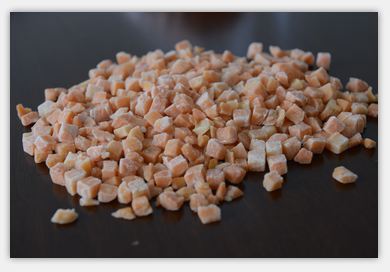Autumn season trimming of northern cold season lawns
The cool-season turf has the characteristics of returning to early morning, late yellowing, and long green period, and it occupies a large proportion in urban afforestation in northern China. However, the cool-seasoned turf prefers the cold climate. After hot and humid summers and hot summers, how to strengthen conservation management in the autumn and restore the turf to a good growth posture is a problem that maintenance managers need to solve. One, watering The northern region is arid, rainy, windy, dry, and chapped in the autumn. Therefore, timely watering is necessary. Where conditions permit, it is usually watered every 5 to 7 days. The time should be chosen before 10 am or after 4 pm. Every time you want to cast enough water, especially in the case of prolonged drought and no rain, it is advisable to reach a depth of 15 centimeters. In this way, the root system can be expanded to the deep soil, and it will be long-term and its roots will be developed. On sloping lawns, the water should flow in slowly so that there is time for seepage and prevent the loss of water, especially at the top of the slope. Sprinkler irrigation should follow three principles: First, use small holes or spray spray; Second, the water spray speed should not be too fast, it should be the same speed as the soil seepage; Third, to avoid the accumulation of water in the soil, especially a large area of ​​water, each time Water is preferably 10 to 15 cm in wet soil. Second, fertilization After the spring turns green in spring, fertilizing in the middle and late March can promote root growth, more tillers, and control weed growth, resulting in high coverage and enhanced resistance. However, fertilization in autumn is often overlooked and even considered unnecessary. This is very wrong. Applying two fertilizers from late August to late October can stimulate the growth of turfgrass roots, control high growth periods, increase cold resistance, and extend the green period, which in turn will cause early spring turf germination. Taking urea as an example, an amount of 18 grams per square meter is enough to ensure the nutrient supply of turfgrass and the turf grows robustly. When the fertilizer is applied, the dew on the lawn should be dried to prevent the fertilizer from sticking to the grass and burning the leaves, which will affect the viewing. Because the fertilizer can only infiltrate from the ground surface and cannot spread to the surrounding area, the fertilization must be uniform and sprinkled immediately after application to ensure that the root system is fully absorbed and the lawn is not burned. Third, trim The cool-season turf grows like a fertilizer and grows rapidly from mid-May to mid-October. If the pruning is not timely, it is easy to fall down, and it is yellow. Because of its large amount of growth, the number of prunings is as high as 13 times a year. Therefore, timely pruning is required. It is vital that if it is otherwise ventilated and poorly lighted, it will easily die and death, and it will cause diseases. In order to avoid the lawnmower leaving the rut on the surface, it is best to cut it when the soil is not damp and soft. The ideal time for the smashing is to reduce the artificial damage to the turfgrass when the leaves are dry. The height of the rake must not be less than 5 cm, and the height of the turfgrass on the slope should be flatter. The cut grass should be promptly ironed out to increase the permeability of the lawn and reduce the occurrence of pests and diseases. Be sure to keep the lawnmower blade sharp and reduce leaf wounds. The pruned lawn is highly controllable, with beautiful landscapes, and it promotes the germination of the base. The flowering of turfgrass consumes a lot of nutrients, and flowering should be avoided. Once the inflorescence is formed, cut it off in time. The last pruning height before entering the winter should not be less than 8 cm, which is conducive to the cold-resistant overwintering of the lawn. IV. Pest Control In the fall, the weather turned cold, and turfgrass diseases and insect pests were also significantly reduced. Moderate cutting, timely removal of weeds, control of turf dry humidity, and improved air circulation conditions will reduce the occurrence of pests and diseases. The principle of control is "prevention first, prevention and control combined." In the fall, the main control is rust disease. Once it is discovered, taking appropriate measures in time will generally not cause serious harm.
Carrot is a kind of vegetable which is rich in nutrition and easy to process. The raw materials are bright red, the section yellow core is small, and the luster is not damaged. Processing should be selected one by one, cut off the non-edible parts, wash 2 to 3 times, according to the requirements of cutting into various shapes, such as block, sheet, stripe, dice, round pattern, stripe pattern, etc. the remaining material is generally processed into dice. The products used for export should be removed according to the requirements of merchants, and the peeling machine can be used for mass production. The processed products are blanched for 1-3 minutes in the hot water of 100 C in the basket. The blanching degree should be strictly controlled. If the blanching is excessive, the products will become soft and discolored, which will affect the quality of the products. After blanching, chill to below 10 C, drain on the vibrating drainer, freeze in the quick freezing device for 10 minutes, and pack quantitatively and refrigerate. Customers who need to freeze Diced Carrots can contact us at any time.
Frozen Diced Carrots,Diced Carrots,New Crop Carrot,Frozen Carrot Cube LETING JINTIAN FRUIT AND VEGETABEL CO., LTD. , http://www.chinafrozenvegetable.com